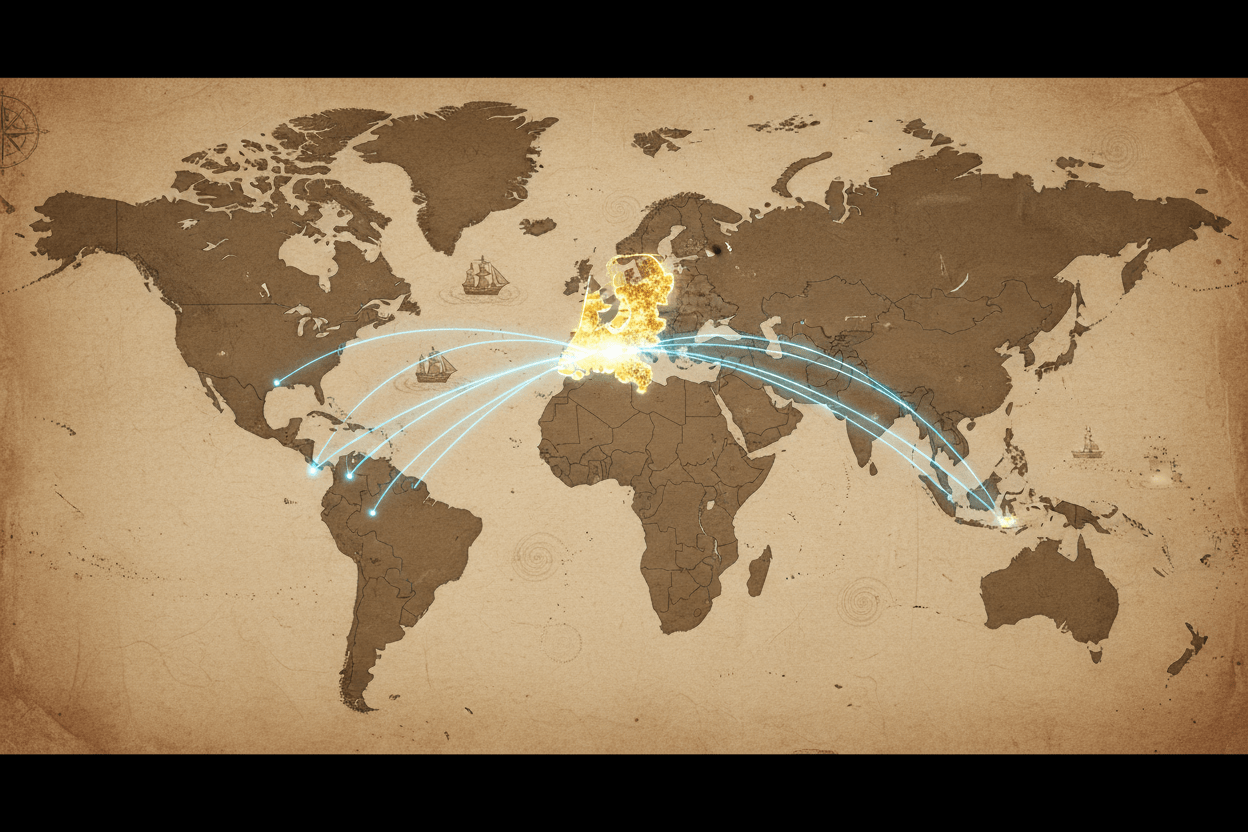When you picture the Netherlands, you likely imagine a landscape of windmills, tulip fields, and intricate canals winding through cities like Amsterdam. It’s a nation famous for its art, its progressive society, and its remarkable battle with the sea. But this small European country casts a much longer geographical shadow than its size suggests. The Dutch Empire, at its zenith, was a global network of trade and territory. While most of that empire has dissolved, a fascinating and complex entity remains: The Kingdom of the Netherlands.
Stretching from the reclaimed lands of Northern Europe to the volcanic peaks and coral reefs of the Caribbean, the modern Kingdom is a living map of a colonial past. It is a single sovereign state composed of four distinct countries, each with its own government, culture, and unique geography. Let’s embark on a geographical tour of this transatlantic kingdom.
The European Anchor: A Low Country with High Ambitions
The story begins in the Netherlands proper, the European heart of the Kingdom. Its physical geography is its destiny. Roughly a third of the country lies below sea level, a testament to a centuries-long struggle against the North Sea. This constant negotiation with water created a nation of ingenious engineers, traders, and seafarers. The iconic polders—vast tracts of land reclaimed from the sea—are not just agricultural heartlands; they represent the mindset that allowed a small nation to build a global maritime empire. Cities like Amsterdam and Rotterdam, built on a maze of canals and fortified by dikes, became the command centers from which the Dutch East and West India Companies projected power across the globe.
A Kingdom Across the Ocean: The Caribbean Netherlands
Cross the Atlantic, and the geography shifts dramatically. Here, scattered across the turquoise waters, are the other three constituent countries—Aruba, Curaçao, and Sint Maarten—along with three “special municipalities” of the Netherlands: Bonaire, Sint Eustatius, and Saba. They are often grouped by their geographical location.
Sun-Soaked and Arid: The “ABC Islands”
Located in the Leeward Antilles, just off the coast of Venezuela, the ABC islands share a dry, sunny climate and a landscape dotted with cacti and divi-divi trees bent by the constant trade winds.
- Aruba: Known as “One Happy Island”, Aruba is a constituent country famous for its stunning white-sand beaches like Eagle Beach and Palm Beach. Its interior is arid and rocky, dominated by Arikok National Park and the volcanic Hooiberg hill. The capital, Oranjestad, is a bustling cruise port where brightly colored Dutch colonial architecture meets Caribbean vibrancy. Its human geography is shaped almost entirely by tourism.
- Curaçao: The largest of the ABC islands and also a constituent country, Curaçao has a more diverse economy. Its capital, Willemstad, is a UNESCO World Heritage site, renowned for the iconic Handelskade—a waterfront row of pastel-painted 17th-century buildings. The city is geographically split by St. Anna Bay, connected by the famous Queen Emma Pontoon Bridge. Its deep natural harbor made it a historic center of trade and, more recently, a site for oil refining.
- Bonaire: Unlike its neighbors, Bonaire is a special municipality of the Netherlands. Its geography is defined by conservation. The entire coastline is a protected marine park, making it a world-renowned destination for scuba diving and snorkeling. In the south, vast, brilliant pink salt pans, once the backbone of the island’s salt-harvesting economy, are now a critical habitat for flamingos. This blend of historical industry and modern eco-tourism defines its unique character.
Volcanic and Verdant: The “SSS Islands”
Further north, in the Windward Islands, the geography changes to lush, volcanic landscapes. These islands receive more rainfall and have a different feel entirely from their arid southern counterparts.
- Sint Maarten: Perhaps the most unique geographical entity in the Kingdom. This constituent country occupies the southern half of an island it shares with the French overseas collectivity of Saint-Martin. This creates a fascinating open border, blending Dutch and French Caribbean cultures. Philipsburg, the Dutch capital, lines a beautiful bay, while the island is famous for Maho Beach, where airplanes fly thrillingly low over sunbathers to land at Princess Juliana International Airport.
- Sint Eustatius (“Statia”): A special municipality, Statia is dominated by a single, powerful geographical feature: “The Quill”, a dormant volcano cloaked in a lush rainforest. In the 18th century, this island was known as “The Golden Rock”, one of the busiest and wealthiest trading ports in the world. Today, it’s a quiet haven for history buffs and hikers exploring the volcano’s crater.
- Saba: Nicknamed “The Unspoiled Queen”, Saba is essentially the peak of a dormant volcano rising straight from the sea. This five-square-mile special municipality has virtually no beaches. Life here is dictated by its dramatic topography. Its only road, aptly named “The Road”, is an engineering marvel, hand-built by islanders, snaking up the steep mountainside. It is also home to the world’s shortest commercial airport runway, a thrilling landing strip perched on the island’s only flat spot.
A Living Legacy: A Mosaic of Geography and Culture
What does it mean to be part of this kingdom today? It’s a relationship of shared history, a common monarch (King Willem-Alexander), and Dutch defense and foreign policy. The Dutch language is official everywhere, but in practice, Papiamento (a creole of Spanish, Portuguese, and Dutch) is spoken on the ABC islands, while English is dominant on the SSS islands.
The lingering footprint of the empire is not just in the architecture of Willemstad or the name of a fort. It’s in this very structure of a single kingdom spanning continents. It’s a geopolitical curiosity forged by trade winds, salt, sugar, and the tides of history. From the low-lying polders of Europe to the high volcanic peaks of the Caribbean, the Kingdom of the Netherlands remains a fascinating testament to how geography shapes destiny, creating a diverse and multifaceted nation that defies simple definition.
